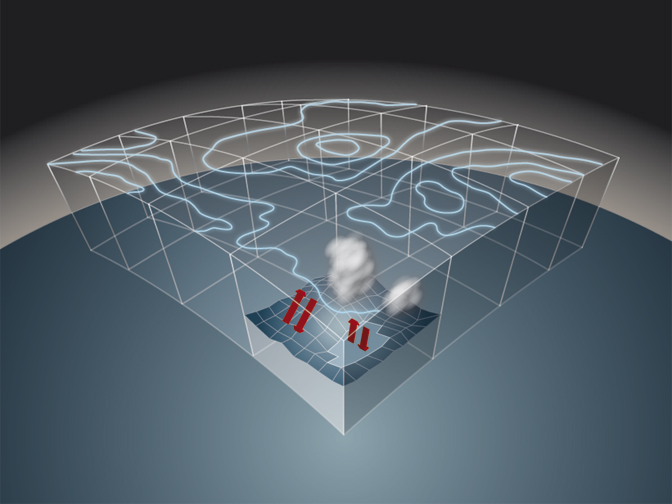

The Annual September Seminar has a long tradition at ECMWF and is a well-known event in the European meteorological calendar. It is part of ECMWF's educational programme, and always covers a topic related to numerical modelling and forecasting. Typical topics are numerical methods, physical parametrization, data assimilation, usage of satellite data, ensemble forecasting and seasonal forecasting. These topics have a recurring cycle of about seven years. The purpose is to give an overview of a particular research area to mainly young scientists.
This year's seminar will take place from 1 to 4 September on the subject of 'Physical processes in present and future large-scale models'.
Numerical models of the atmosphere have a resolved part and a parametrized (or physics) part. In the resolved part, atmospheric variables such as wind, temperature and moisture are represented at every grid point and explicitly simulated with the help of numerical techniques. The current high-resolution model at ECMWF covers the globe with a 16 km resolution grid in the horizontal and 137 layers in the vertical. In this way the global atmosphere is represented by about 300 million grid points.
Despite the high resolution, not all processes are resolved. Radiation, clouds, convection, precipitation and turbulent exchange with land and ocean act at smaller scales and need to be presented in a statistical or 'parametrized' way. The collection of schemes that handle these processes in a numerical model is often referred to as the physics package. The emphasis of this year's seminar is on the understanding and parametrization of these processes across scales.
In the coming years, ECMWF is expected to run resolutions where some processes are partially resolved. This is often referred to as the 'grey zone' and applies particularly to convection and orography. Increasingly, part of the convection will be simulated explicitly and more of the gravity wave and orographic blocking will be explicitly resolved. The gradual transition from fully parametrized convection at low resolution to explicitly resolved convection at e.g. 1 km resolution, is particularly challenging. Scale-aware schemes are needed and will require substantial effort. The same applies to orography. More and more of the real orography will be resolved and a smooth transition is needed from parametrized gravity waves to fully resolved ones.
In the seminar, each process will be covered by a few lectures in which the role of the process in the atmosphere, its parametrization and its impact in the model atmosphere are presented in a pedagogical way. Additional topics are the role of physical processes in data assimilation, verification, and the representation of model uncertainty in ensemble systems.
For more information, please visit our 2015 Annual Seminar page.
